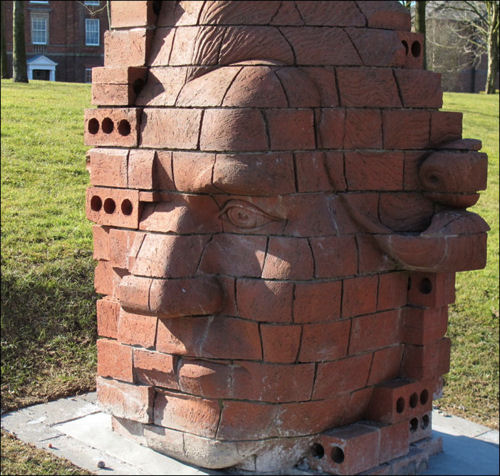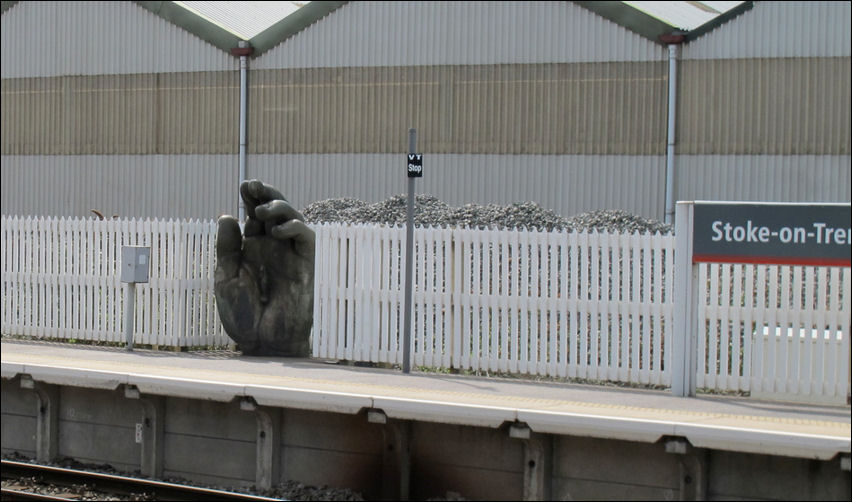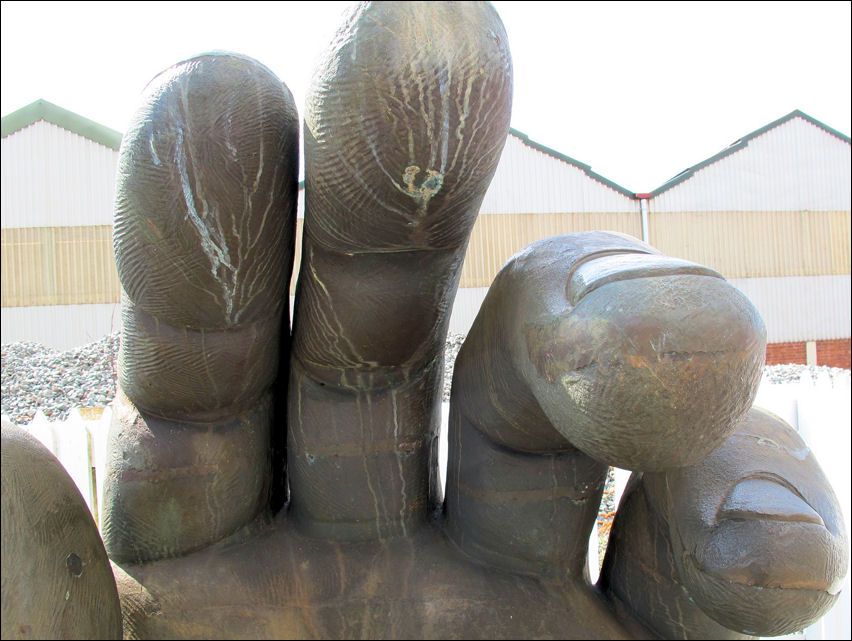Vincent Woropay, sculptor, born December 4 1951; died June 12
2002
The
sculptures of Vincent Woropay, who has died aged 50 of cancer
of the thorax, are both arresting and thought-provoking. They
give material form to a fluidity between reality and
imagination more usually associated with language and
literature.
Born
of Polish parents in London, Woropay moved with his family
to Los Angeles in 1964, but returned to London to complete
his schooling at the Salesian College in Battersea. After a
bout of saxophone playing, he studied sculpture at Brighton
Polytechnic from 1974 to 1977, and at the Slade School of
Fine Art, London, from 1977 to 1979.
As
a fellow at the British school in Rome in 1981, he
pioneered the idea that sculpture could be brought about
through the solidification of a void. His piece for the
building's entrance hall, The Suffering Clay, was the interior
of that hall made solid, but scaled down: as much smaller than
the artist as the artist was smaller than the hall. Made of
gilded wood, the object that resulted from this compressed
inversion resembled a precious coffer that would forever defy
attempts to open it.
This
was clearly the result of a poetic impulse, a way of sculpting
in metaphor, and Woropay was unusual among contemporaries in
his field for this literary emphasis. Certain works, such as
Parole reali (Real Words, 1984) have a specific narrative
attached, in this case the story of King Idanthyrsus sending
the mighty Darius a frog, a mouse, a bird, a ploughshare and a
bow. The narrative is realised in a sequence of bronze objects
as enigmatic as the message that informed the gift itself.
For
Woropay, sculpture was an alchemical process. What
mattered, finally, was the aura the work generated rather than
its meaning, although the work might be a compound of phrases
from history, from the language of forms, from science or from
literature. It was this that made evenings at the house he
shared with Chloe Chard, whom he met in Rome, intoxicating in
many varied ways; Chloe being an enthusiast of the grand tour,
and as deeply read in literature as Vincent was steeped in
esoterica.
What
he understood was the gravitas of sculpture, and he worked
consciously on this with his big hands - creating even
bigger hands, gigantic ones such as Hand With Kronos
(national garden festival, Gateshead, 1990, and now at
Stoke-on-Trent railway station). After so much modern
abstraction, he restored to his art the integrity of the
natural object in its own right, rescuing it also from the
brashness of pop art, although he always threaded a vein of
humour through his pieces.
Woropay
isolated fragments. In Patagon (1985), the foot and ankle of a
Patagonian giant on the ridge of a wooded hill, overlooks
Powis Castle, mid-Wales, as articulately as Shelley spoke for
the ruined Ozymandias.
The
same could be said for Capo, made in 1986 for the national
garden festival, Stoke-on-Trent. This is a colossal head of
Josiah Wedgewood carved out of extra-large bricks, but, like a
slave by Michelangelo, never quite emerging from the material.
It makes one feel that Wedgewood must still be something of an
edifice in the potteries, and then leads one to think about
clay - how one bit ends up in the Victoria and Albert Musem
and another in a civic wall.

Capo, made in
1986 for the national garden festival, Stoke-on-Trent.
This is a colossal head of Josiah Wedgewood
 more on the
sculpture of Josiah Wedgwood
more on the
sculpture of Josiah Wedgwood
Woropay
used the pictorial architecture of Giorgio De Chirico to
create arches with a perspectival distortion, thus making the
imaginary physi cal. He would work in a material for the sake
of its name: alabaster, for example, is a lovely word redolent
of poetry.
His
art was an attempt to capture what is fleeting, by, for
instance, "gilding" a cloud, or to suggest the
passing of the monumental - his solemn but elliptical urn
(Giddier Gloom, 1984) being but a three-dimensional illusion
with, perhaps, a brass frond underneath it. Woropay could
use discrepancy and inversion to advantage.
He
and Chloe travelled widely, as on their trips to Egypt in
1987 and Zambia in 1990. Each visit stimulated a response in
his practice. At the same time, the objects chosen evolved. In
New Zealand, he created a monumental rabbit virus (NRSV,
Mutating, 1997) and presented boulders with minimal
intervention (Surface 1 and Surface 2, 1999).
With
each year, too, the work was becoming more fluid, more assured
and more his own. There are later pieces which are simply
kneadings - matter moulded and then coated with soot or dipped
into silver. They emerge enigmatic, but rich in allusion, as
he worked through an imaginary agenda akin to the invented
history and geography of the Scienza Nuova, by Giambattista
Vico, an author high in his estimation. It was from that 1721
account of the rise and fall of civilisations that the idea of
the Patagonian giant came.
By
stretching boundaries and dissolving categories, while
submitting his work to the rigour of a necessary simplicity,
Woropay fused romantic and classic impulses. There is no doubt
that, in his discriminating way, he had more to tell us about
the transient nature of existence. For his family, his friends
and his admirers, his own existence has proved all too
transient.
Chloe
survives him.
The
Guardian Newspaper 5 July 2002
|
![]()




